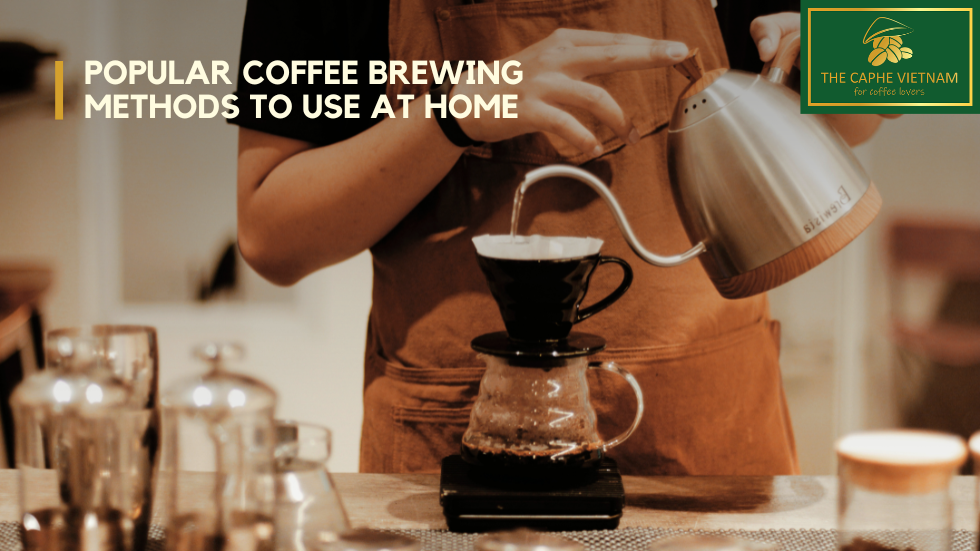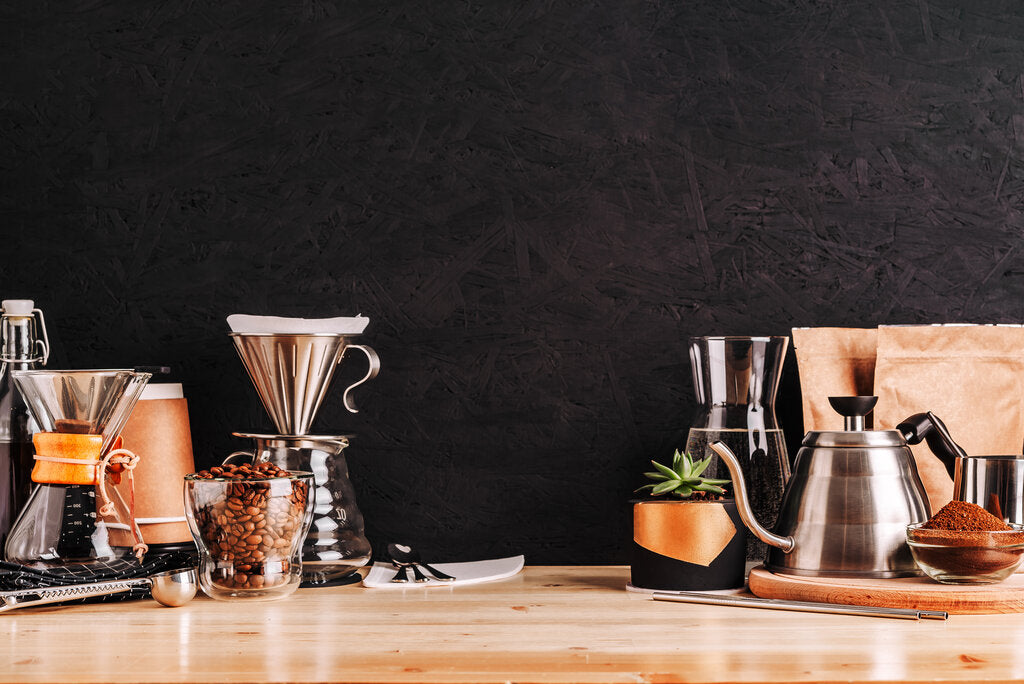Understanding Coffee Brewing Methods: Important Strategies for Every Coffee Lover
Understanding Coffee Brewing Methods: Important Strategies for Every Coffee Lover
Blog Article
The Science Behind Coffee Developing: How Temperature Level and Time Affect Your Beverage
Recognizing the science behind coffee developing reveals that temperature level and time are not plain variables yet critical elements that determine the drink's flavor profile and overall high quality. The ideal brewing temperature usually drops between 195 ° F and 205 ° F, while the duration of extraction varies substantially throughout various methods. This interaction of variables can lead to a cup that is either frustrating or fascinating. As we explore the subtleties of these components, the concern occurs: just how can one properly equilibrium temperature level and time to achieve that perfect mixture?
The Chemistry of Coffee Removal
The chemistry of coffee removal explores the elaborate procedures that change raw coffee beans right into the aromatic drink taken pleasure in worldwide. This transformation largely includes the solubility of numerous substances existing in the beans, which are influenced by aspects such as grind dimension, water top quality, and the brewing approach utilized.
Throughout the brewing process, warm water functions as a solvent, removing soluble substances, consisting of high levels of caffeine, acids, lipids, and sugars, from the coffee grounds. Each substance adds to the flavor account, fragrance, and body of the final beverage. Acids are accountable for intense and appetizing notes, while oils add to a rich mouthfeel.
The removal process is not uniform; different compounds dissolve at various prices. The first phases of brewing remove acids and sugars, resulting in a pleasant acidity, while long term extraction can result in anger as a result of over-extraction of undesirable compounds. Recognizing these chemical interactions is critical for maximizing developing strategies, as the equilibrium between removal time and water temperature level can substantially influence the general quality of the coffee. Inevitably, understanding the chemistry of coffee removal is crucial to attaining a well-rounded and savory mug.
Perfect Brewing Temperatures
Discovering the right brewing temperature level is vital for unlocking the complete possibility of coffee tastes and aromas - coffee brewing methods. Research study indicates that the optimum variety for developing coffee exists between 195 ° F to 205 ° F(90 ° C to 96 ° C) Within this range, the extraction process properly dissolves the desirable soluble substances in coffee beans, resulting in a delicious and balanced cup
Developing at lower temperatures, such as listed below 195 ° F(90 ° C ), might cause under-extraction, yielding a weak and acidic brew with muted flavors. On the other hand, brewing at temperature levels going beyond 205 ° F(96 ° C) can lead to over-extraction, generating a rough and bitter taste as a result of the extreme dissolution of unwanted substances, such as tannins.
Additionally, the suitable developing temperature level can differ depending upon the coffee bean type and roast degree. For circumstances, lighter roasts commonly benefit from somewhat greater temperature levels to boost their complicated flavor profiles, while darker roasts may be better fit to reduced temperature levels to minimize resentment.
Eventually, keeping accuracy in brewing temperatures is vital for achieving an unified balance of flavors, ensuring that every mug of coffee supplies a gratifying sensory experience.
Impact of Brewing Time
Brewing time plays an essential role in identifying the flavor account and total quality of coffee. The removal process, which influences the taste, aroma, and body of the beverage, is mostly depending on how long the coffee premises touch with water. Much shorter developing times can result in under-extraction, causing a sour or weak flavor, as not nearly enough soluble compounds are liquified. On the other hand, long term developing can lead to over-extraction, where undesirable substances are released, causing a bitter or astringent preference.
Ideal brewing Our site time varies depending on the technique utilized and the grind dimension of the coffee. For example, a French press commonly requires concerning four minutes, while coffee removal is generally finished within 25 to 30 secs. It is important to adjust developing time in combination with various other variables, such as water temperature and coffee-to-water ratio, to attain the preferred flavor account.
Recognizing the influence of developing time allows coffee lovers to refine their brewing strategies, inevitably enhancing the sensory experience of their mug (coffee brewing methods). With cautious attention to this variable, one can open the full potential of the coffee, exposing its special attributes and nuances
Brewing Methods and Their Results

As an example, approaches like French press and cool brew permit for a go to this site much longer steeping time, resulting in a fuller body and durable taste as a result of enhanced removal of oils and soluble solids. Alternatively, coffee brewing utilizes high pressure and a much shorter extraction time, producing a focused shot that stresses intense tastes and an abundant crema.
Pour-over techniques, such as Chemex or V60, supply a more regulated removal procedure, enabling the brewer to control circulation rate and water circulation, which can improve brightness and clearness. Meanwhile, percolation techniques cycle water via the coffee premises numerous times, resulting in a more powerful, often bitter flavor.
Lastly, using paper filters versus steel filters can also influence the last preference; paper filters typically yield a cleaner cup by capturing oils and great bits, while steel filters allow more oils to travel through, contributing to a fuller mouthfeel - coffee brewing methods. Recognizing these subtleties can raise the coffee experience substantially
Tips for Improving Your Mixture
A well-executed mixture can transform even the simplest coffee into an exceptional experience. Grind the beans simply prior to brewing to maximize quality, making sure the grind dimension matches your developing approach-- coarser for French press and finer for coffee.
Water high quality plays a critical duty; use filtered water without impurities. The ideal brewing temperature varies in between 195 ° F and 205 ° F(90 ° C to 96 ° C ) Too warm can blister the coffee, while too amazing may under-extract flavors.
Timing is just as crucial. For immersion techniques, soaking for 3 to 5 minutes is ideal, whereas drip techniques typically take about five mins. Experiment with brew times to find your preferred stamina.

Verdict
In summary, the intricate relationship between temperature level and time is vital in the coffee brewing procedure. Adhering to optimum developing temperatures between 195 ° F and 205 ° F, alongside specific timing tailored to each method, guarantees the desired flavor account is attained. Understanding these scientific concepts empowers individuals to fine-tune their brewing techniques, eventually leading to a more delightful and balanced coffee experience. Proficiency of these elements is essential for any kind of coffee fanatic seeking excellence in their drink.
Recognizing the science behind coffee developing reveals that temperature level and time are not mere variables yet crucial components that dictate the beverage's flavor profile and overall top quality. Understanding these chemical interactions is critical for enhancing developing strategies, as the balance between extraction time and water temperature can considerably influence the total top quality of the coffee.Developing time plays an essential role in establishing the taste profile and overall top quality of coffee. By concentrating on these elements-- bean top quality, grind size, water temperature level, steeping time, and ratio-- you can raise your coffee developing process, resulting in a consistently exceptional mug.
In summary, the complex connection in between temperature level and time is vital in the coffee developing process.
Report this page